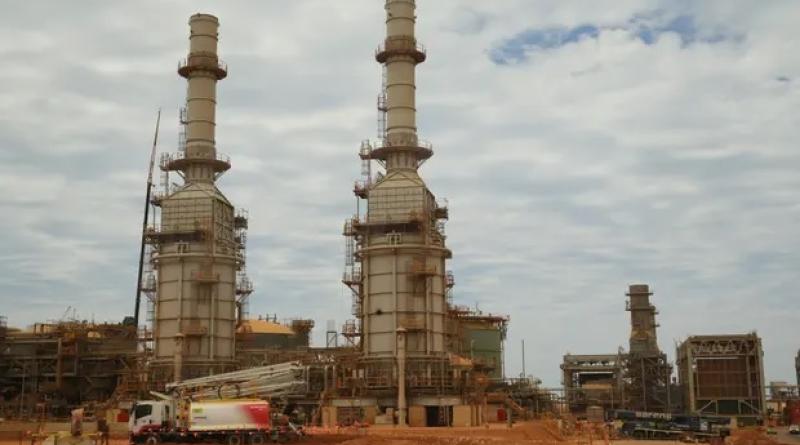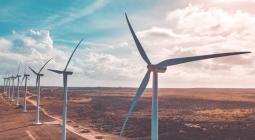Emissions from WA gas project with world’s largest industrial carbon capture system rise by more than 50%

Emissions from Chevron’s Gorgon gas development off Western Australia have increased by more than 50% despite it being home to the world’s largest industrial carbon capture and storage system.
There has been a sharp drop in the amount of CO2 stored underground at the liquefied natural gas plant over the last three years, data released by Chevron showed.
The development off the Pilbara coast was approved on the condition the company store about 4m tonnes of CO2 a year that would have otherwise escaped from reservoirs during extraction and been released into the atmosphere.The company was to pump that CO2 into a natural reservoir 2km beneath Barrow Island. But the CCS development was delayed for more than three years and has failed to reach its promised storage level since it began operating in August 2019.The Gorgon facility injected 1.6m tonnes into the reservoir last financial year, down from 2.2m tonnes in 2020-21 and 2.7m in 2019-20.
Last year’s drop in CO2 storage coincided with a big jump in onsite emissions from the Gorgon LNG operation, from 5.5m tonnes to 8.3m tonnes.
It made the facility Australia’s biggest single major industrial emitter, according to government data. Chevron Australia exported a record 16.7m tonnes of LNG for the year from Gorgon as international gas prices surged after Russia’s invasion of Ukraine.
A company spokesperson acknowledged the decline in emissions storage, and said it was working on a project to improve a pressure management system that was preventing more CO2 being injected under the island. This would “enable carbon dioxide storage rates to increase over time”.
Climate campaigners say the failure of the Gorgon CCS project to deliver what was promised illustrates how little progress the technology has made despite decades of promises.
Kim Garratt, an investigator with the Australian Conservation Foundation, said CCS developments were “being slapped on to otherwise unacceptable projects to make them seem like reasonable options”.
She said the situation at Gorgon was foreseeable, pointing to a 2006 recommendation by the WA Environment Protection Authority that the development should not be approved as there would be “unacceptable impacts” if the CCS plan did not capture a high percentage of reservoir emissions. “Here we are, almost two decades later, and this unacceptable project is up and running and pumping out as much pollution as 2.5m cars every year,” Garratt said.
Big promises but little progress
The problems in getting the Gorgon CCS development fully operational comes as international organisations, governments and particularly the gas industry continue to stress the technology’s importance in meeting global climate goals. It is regularly included in modelling to support targets of net zero emissions by 2050.
In Australia the technology has been promised billions of dollars in public funding this century for little result. The Gorgon project, which remains the sole commercial CCS development operating in Australia, received $60m in federal support.
Internationally, according to the Global CCS Institute, there were 30 CCS projects in operation last year, with a combined maximum capacity of 42m tonnes of CO2 a year – about 0.1% of global emissions. It said 11 more were under construction.
Under its terms of approval, the Gorgon development was expected to sequester at least 80% of reservoir gas across a rolling five-year period starting in 2016. The company was not required to capture emissions released during LNG processing. It meant even a fully successful CCS facility would reduce total onsite emissions from Gorgon by only about 40%.
The company missed this target by more than 5m tonnes. It agreed to buy the equivalent amount in carbon offsets and invest $40m in “low carbon energy projects”. The forecast cost of the offsets at the time was between $78m and $194m.
Chevron, which operates the Gorgon facility on behalf of partners including Shell and ExxonMobil, said managing emissions was “an integral part” of how it planned and ran its business.
Its spokesperson said the CCS project had stored more than 7.8m tonnes of CO2 since it started operating, demonstrating the “meaningful contribution CCS technology can play in the pursuit of a lower carbon future”. The company had also bought more than 7.5m tonnes worth of carbon offsets over the life of the project.
“Emissions increased in 2021/22, primarily as a result of the return to three-train operations and increased reliability at the Gorgon natural gas facility following reduced production in the prior period due to equipment repairs,” the spokesperson said.
“Reduced CO2 injection rates at the Gorgon CCS system also contributed to the overall increase in emissions.”
Garratt said the latest government data showed the Gorgon plant was a bigger emitter within Australia than any coalmine. She said it led to much higher emissions after its LNG was shipped and burned in Asian countries.
New LNG developments have led to a significant increase in national industrial emissions over the past decade, and wiped out cuts in pollution from electricity generation due to an influx of solar and wind energy.
The Albanese government says a revamp of the climate policy known as the safeguard mechanism, which passed through parliament with support from the Greens and independents, would prevent further combined increases in industrial emissions and lead to cuts over time.
Combined CO2 emissions from the 215 polluting facilities covered by the safeguard mechanism last year were 137.5m tonnes – higher than in 2020-21, but still slightly less than pre-pandemic levels.
Under the changes to the scheme, emitting sites will be set new emissions intensity limits – known as baselines – before 1 July that will be reduced in most cases by 4.9% a year. Companies can meet targets through direct onsite cuts in pollution and by buying contentious carbon offsets.
It is unclear if Gorgon’s baseline will be set at a level that assumes the CCS project is working as promised when the project was approved.
cover photo: Last year’s drop in CO2 storage coincided with a big jump in onsite emissions from the Gorgon LNG operation, from 5.5m tonnes to 8.3m tonnes. Photograph: Ray Strange/AAP





